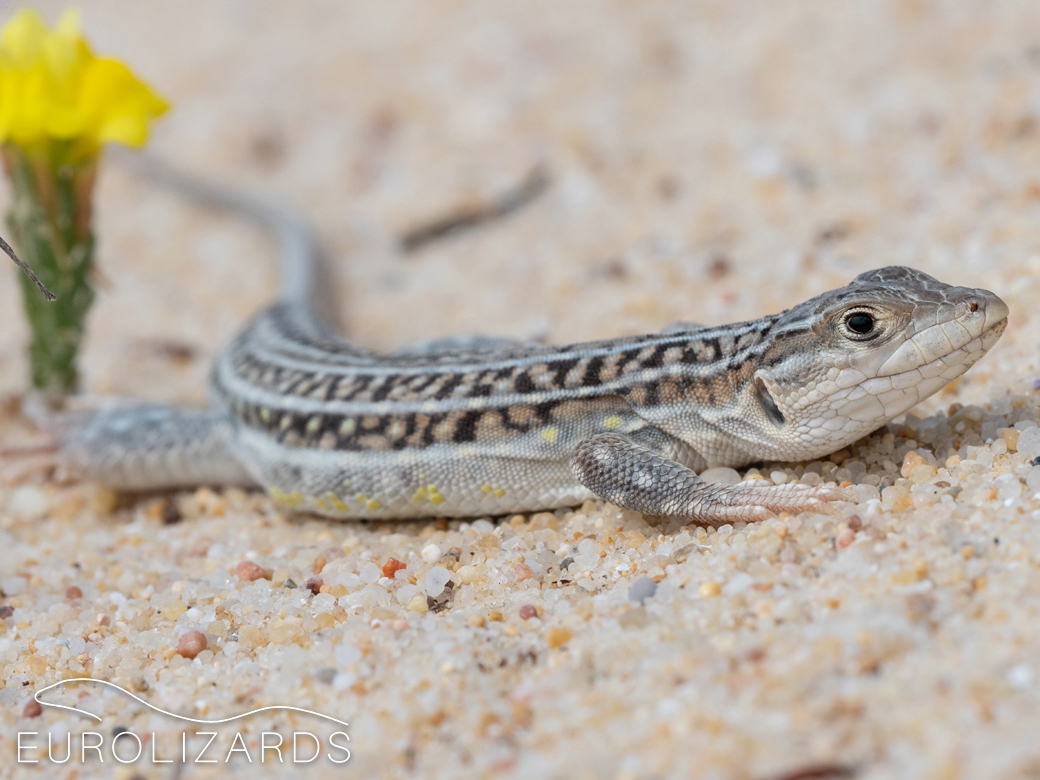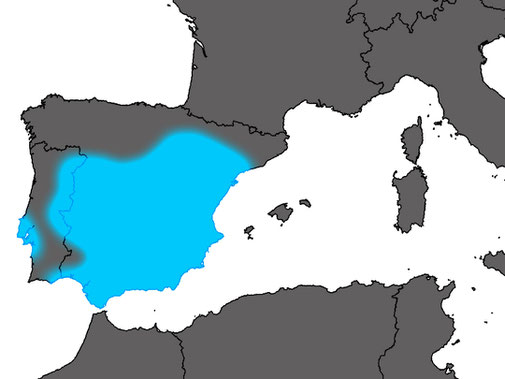Acanthodactylus erythrurus - Spiny-footed Lizard

The genus Acanthodactylus comprises about 40 species in the arid areas of Africa and Asia. Surprisingly, Acanthodactylus erythrurus is the only European representative of this group. In Europe, only the nominate subspecies occurs.
It inhabits large parts of Spain (except of the north) whereas its distribution in Portugal seems to be patchy with populations in the eastern part of the country and an isolated occurence at the Lisbon and Alentejo coast. It prefers open habitats and may be a quite conspicuous lizard in coastal dune areas. With the "fringes" on their spiny toes, they are able to move rapidly on loose sand. These beautiful but shy and fast lizards can best be observed basking at cooler temperatures in spring or autumn.
Adults show a camouflage pattern whereas juveniles with their distinct stripes and red tail are quite conspicuous. The red tail seems to be some kind of anti-predation strategy as it distracts from the lizard's body.
The Spiny-footed Lizard frequently co-occurs with the Iberian Psammodromus species. From these, Acanthodactylus erythrurus can be easily distinguished by its characteristic back pattern: Acanthodactylus erythrurus has two continuous light vertebral and light dorsolateral lines. At Psammodromus hispanicus, Psammodromus occidentalis and Psammodromus edwarsianus, these lines are interrupted to black and white bars which generate a "checkered pattern".
Subadult Acanthodactylus erytrhurus (see below) may have simlar patterns but at this stage they are much bigger than the small Psammodromus species.
Acanthodactylus erythrurus can be distinguished from Psammodromus algirus by its light vertebral lines and the black markings on its back. The latter one can also be identified by its strongly keeled scales.







EUROLIZARDS - The Home of European Lizards! © Birgit & Peter Oefinger
